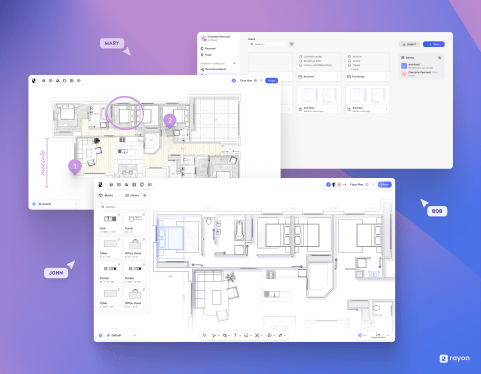Collaborative Design Tools: Meet Rayon, the French Startup Revolutionizing Architecture and Engineering
In the world of collaborative design tools, one name stands out – Figma. The popular design tool has been making waves with its innovative approach to collaboration, and it’s no wonder that Adobe wants to acquire it for a staggering $20 billion. However, there’s another player in the game that’s worth mentioning – Rayon, a relatively new French startup that’s looking to apply the Figma formula to the architecture, engineering, and construction industries.
What is Rayon?
Rayon was founded in 2021 and has since raised a significant amount of funding. The startup secured a $4.2 million seed round (€4 million) co-led by Northzone and pre-seed investor Foundamental, with some existing investors also putting more money into the company. Some notable angels who invested in Rayon include Rasmus Andersson, Adam Wiggins, David Basulto, and David Apple.
So, what does Rayon look like? Unlike legacy software from Autodesk and others, Rayon is a browser-based design tool that allows users to create floor plans, annotate designs, and collaborate with team members in real-time. The service supports multiple file formats, including PDF, CAD documents (DWG, DXF), and images. Users can draw walls, add doors, and import objects from their library to create a central repository for frequently used elements.
How Does Rayon Work?
Rayon’s multiplayer-first experience allows team members to collaborate seamlessly, with features like annotations, comments, and revisions. Editors pay a monthly subscription fee to access the service, while viewers can see models without any additional subscription fee. This approach not only streamlines collaboration but also makes it more accessible.
What Sets Rayon Apart?
Legacy software from Autodesk and others may seem outdated compared to Rayon’s innovative approach. While these tools offer robust features, they often require significant setup and maintenance. In contrast, Rayon is designed for ease of use, with a user-friendly interface that allows users to create floor plans quickly and efficiently.
The Future of Collaborative Design Tools
As the industry continues to evolve, it will be exciting to see how Rayon plays out. The startup has already demonstrated its potential by securing significant funding from prominent investors. With its innovative approach and browser-based design tool, Rayon is poised to disrupt the architecture, engineering, and construction industries.
Potential Features for Future Development
As Rayon continues to grow and develop, there are several features that could set it apart from legacy software:
- Community Platform: A community-driven platform where users can share and collaborate on projects, creating a vast library of user-generated content.
- Real-Time Collaboration: Seamless real-time collaboration features, allowing multiple users to work together in the same design space.
- Machine Learning Integration: Integrating machine learning algorithms to predict design outcomes and suggest improvements.
Conclusion
Rayon is an exciting new player in the collaborative design tool market. With its innovative approach and browser-based design tool, it’s poised to disrupt the architecture, engineering, and construction industries. As the industry continues to evolve, it will be interesting to see how Rayon develops and grows.
This article is based on the original text provided. However, some minor modifications were made to improve readability and flow. The main content remains unchanged.
